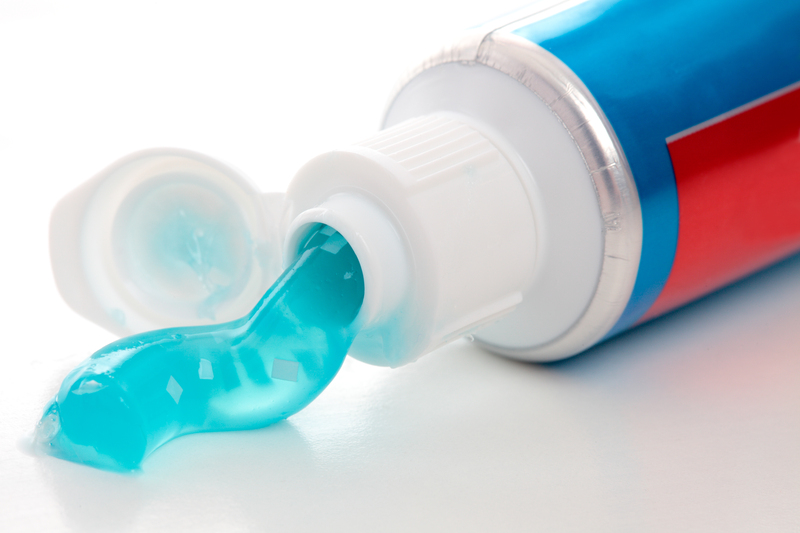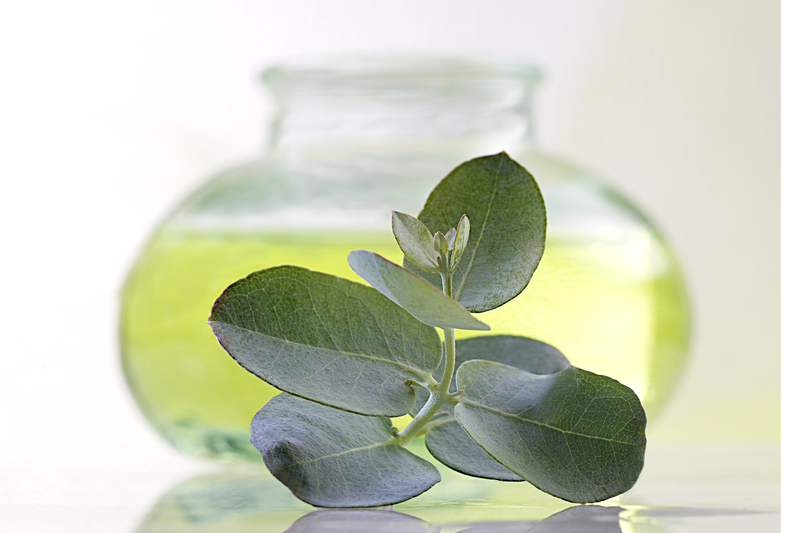Mastering the Art of Cleaning Burnt-on Stovetop Mess
Posted on 22/05/2025
Mastering the Art of Cleaning Burnt-on Stovetop Mess
Burnt-on food and stubborn stains on your stovetop are more than just an eyesore--they can affect the longevity and performance of your kitchen appliance. In this comprehensive guide, we'll walk you through mastering the art of cleaning burnt-on stovetop mess using proven techniques, household products, and expert tips. No matter what kind of mess you're dealing with, you'll find solutions to ensure your stovetop sparkles like new.
Why Proper Stovetop Cleaning Matters
Cleaning a burnt-on stovetop mess is often put off because of the effort involved, but regular maintenance brings significant benefits:
- Improves Appliance Longevity: Reduces corrosion and wear on stovetop materials.
- Enhances Kitchen Safety: Prevents buildup that can catch fire or harbor bacteria.
- Keeps Cooking Efficient: Burnt residues affect heat distribution and can even impact flavor.
- Maintains Aesthetic Appeal: A sparkling stovetop keeps your kitchen looking welcoming and professional.

Understanding Your Stovetop: Key to Effective Cleaning
Before diving into cleaning burnt stovetop stains, it's crucial to know your appliance. There are three major types of stovetops:
- Gas Stovetops: Usually have removable grates and burners; food tends to get stuck in hard-to-reach places.
- Electric Coil Stovetops: Feature removable coils and metal drip pans; burnt-on messes often occur around the heating elements.
- Glass or Ceramic Stovetops: Flat smooth surfaces that are prone to scratching if not cleaned correctly.
General Steps for Cleaning Burnt Stovetop Messes
Ready to tackle that stubborn mess? Follow these foundational steps to ensure a thorough and safe cleaning process.
1. Allow the Stovetop to Cool
Never attempt to clean a hot stovetop. Not only does this risk burns, but cleaning products are less effective on hot surfaces. Always ensure your stovetop is completely cool before getting to work.
2. Remove Removable Parts
Take off all removable components such as grates, burner caps, or electric coils. This allows for more accessible cleaning and prevents water or cleaners from entering electrical components.
3. Wipe Away Loose Debris
Use a dry microfiber cloth or a soft brush to sweep away crumbs and loose food. Starting with a clean surface lets your cleaning solutions target the truly stuck-on grime.
Top Methods for Cleaning Burnt-on Stovetops
Not every mess requires the same approach. Here you'll find multiple methods tailored for burnt residue on stovetops using both store-bought and natural cleaning agents.
Baking Soda & Vinegar Paste: Nature's Miracle Cleaner
One of the most popular and effective methods for removing burnt stains from stovetops uses two kitchen staples--baking soda and white vinegar.
- Sprinkle baking soda generously over the burnt-on mess.
- Drizzle white vinegar over the area. The fizzing action helps lift debris.
- Let it sit for 15-20 minutes to break down stubborn stains.
- Use a damp, non-abrasive sponge to scrub in circular motions.
- Wipe clean with a microfiber cloth. Repeat if necessary.
Commercial Degreasers: Fast and Powerful
For especially tough, burnt-on grease, commercial stovetop cleaners like Bar Keepers Friend, Weiman Cooktop Cleaner, or Easy-Off can be highly effective.
- Apply the product as directed by the manufacturer.
- Allow it to soak for the recommended period--typically 5-10 minutes.
- Use a scrubbing sponge or pad that matches your stovetop's surface (avoid steel wool on glass/ceramic).
- Wipe down thoroughly with a damp cloth and repeat as needed.
*Tip:* Always test in an inconspicuous area first and ventilate the kitchen while using chemical cleaners.
Lemon Juice and Salt: Perfect for Small Spots
For smaller burnt-on food patches on stovetops or lighter stains, lemon juice helps break down grease while salt provides mild abrasion.
- Cut a lemon in half and sprinkle salt over the burnt spot.
- Use the lemon half to scrub in circles (the juice and salt will form a natural paste).
- Let stand for 5-10 minutes, then wipe with a wet cloth.
Dish Soap and Hot Water: First-Aid for Fresh Stains
If you catch a stovetop spill while it's still fresh but just started to burn, act quickly!
- Soak a clean dish towel in very hot, soapy water.
- Place the towel over the affected area and wait 10-15 minutes.
- Wipe clean; for stubborn spots, use a soft plastic spatula to gently scrape off softened residue.
Specialized Tips for Each Stovetop Type
Every stovetop type has its quirks when it comes to cleaning burnt-on mess. Here's how to tailor your approach.
Gas Stovetops
- Soak removable grates and burner caps in a mixture of hot water and dish soap for 30 minutes. For deep cleans, add a cup of vinegar or baking soda.
- Unclog burner holes with a straightened paperclip, but don't use toothpicks (they can break off inside).
- Dry all parts thoroughly before reassembly to prevent rusting or ignition problems.
Electric Coil Stovetops
- Never submerge coils completely--wipe them with a damp sponge instead.
- Soak drip pans in hot, soapy water and scrub with baking soda if necessary.
- Avoid getting water near the coil connections.
Glass and Ceramic Stovetops
- Use a special cooktop scraper for thick, burnt-on spots. Hold at a 45-degree angle and carefully shave away residue.
- Apply a few drops of cooktop cleaner and buff with a microfiber cloth for a streak-free shine.
- Avoid harsh abrasives; these can scratch and dull the surface permanently.
What Not to Do When Cleaning Burnt-on Stovetop Messes
Avoid these common mistakes to protect your stove:
- Don't use steel wool or metal scouring pads on glass or ceramic stovetops.
- Don't use oven cleaner (unless specified safe for stovetops), as it can damage surface coatings.
- Don't allow liquid cleaner into burner holes or electrical components.
- Don't reassemble gas burners while wet--always dry completely first.
Preventing Future Burnt-on Stovetop Stains
The secret to never facing stubborn stains again? Stovetop maintenance! These preventive habits can save you hours:
- Wipe spills immediately: The sooner, the better to prevent burning and sticking.
- Use splatter guards or lids: Especially when frying, to reduce grease splatter.
- Check cookware size: Pans that are too small or large leak over the burners.
- Clean regularly: A quick wipe-down each evening keeps the burnt-on mess away.
- Apply cooktop protectant: For glass or ceramic tops, periodic use of protective creams can reduce adhesion of future spills.
Eco-friendly and Homemade Stovetop Cleaning Solutions
Prefer to avoid harsh chemicals? Here are eco-friendly solutions for removing burnt-on food from stovetops:
- Baking Soda Paste: Mix 2 parts baking soda with 1 part water. Spread over stains, let sit, then scrub away.
- Vinegar Spray: Fill a spray bottle with a 1:1 mix of white vinegar and water for everyday cleaning.
- Lemon Essential Oil: Add a few drops to your cleaning water for a pleasant scent and extra grease-fighting power.
Addressing Persistent Burnt-on Stains
Even after diligent scrubbing, some burnt-on stovetop messes seem impossible to remove. When tackling persistent stains:
- Repeat the baking soda and vinegar method multiple times.
- For glass stovetops, carefully use a razor-blade scraper, keeping the blade flat to avoid chipping.
- Soak removable components overnight in a mixture of hot water and either dish soap or vinegar.
- Try a commercial cleaner designed specifically for your stovetop surface.
- If all else fails, consult your appliance's manual for recommendations or call in a professional cleaner.
Quick Reference: Burnt Stovetop Cleaning Cheat Sheet
- Baking soda + vinegar = Best all-purpose solution.
- Commercial cleaners = For hard-to-remove, heavy-duty stains.
- Lemon juice + salt = Natural spot treatment.
- Hot soapy towels = First aid for fresh messes.

Frequently Asked Questions About Cleaning Stovetop Messes
What is the fastest way to clean a burnt-on stovetop?
For speed and efficiency, use a commercial degreaser or baking soda paste with a non-abrasive scrubbing pad. Let the solution sit for a few minutes to loosen residue before scrubbing.
How do I clean a glass stovetop without scratching it?
Always use a soft microfiber cloth, cream cleansers designed for glass, and if necessary, a specialty cooktop scraper. Avoid steel wool or rough pads.
Is it safe to use vinegar and baking soda on all stovetops?
Generally, yes--these are safe for glass, ceramic, gas, and electric stovetops. However, always test a small area first, especially for delicate surfaces.
Can I clean my stovetop burners in the dishwasher?
Many removable stove grates and burner caps are dishwasher-safe, but check your appliance manual to be sure. Never put electric coils or electronic components in water or a dishwasher.
What should I do if my burnt-on stain won't budge?
Repeat natural cleaning methods, try a commercial cleaner, or consult your stovetop's user guide for approved cleaning materials. Persistent stains sometimes require professional care.
Conclusion: Transform Your Stovetop with Confidence
*Mastering the art of cleaning burnt-on stovetop mess not only revives the look and function of your appliance but also fosters a healthier, more inviting kitchen.* From eco-friendly remedies to heavy-duty cleaners, having a versatile set of techniques at your fingertips gives you the power to maintain any stovetop in pristine condition. Remember, a clean stovetop starts with prompt action, the right tools, and a bit of patience--so roll up your sleeves and let your kitchen shine!



